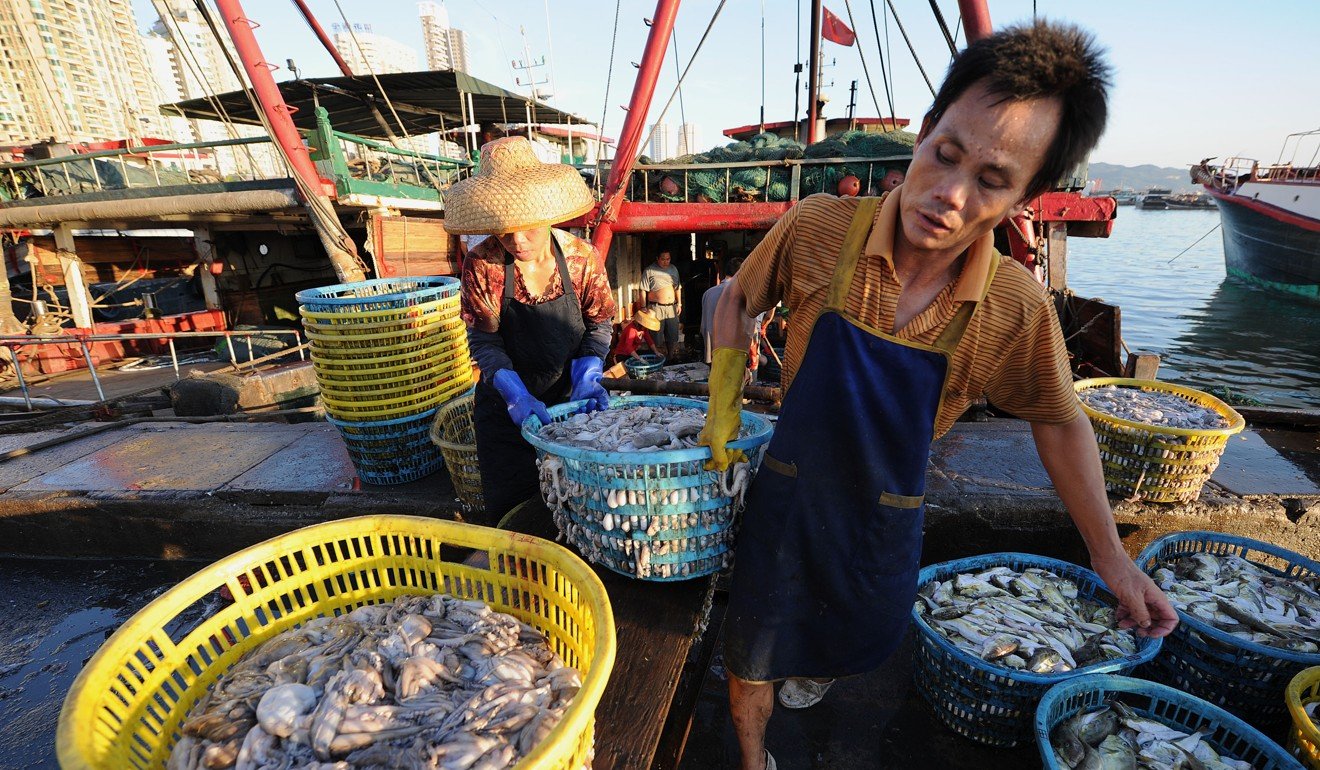
From Africa to South America, China’s fishing fleet outstrips the competition
Survey – said to be the most comprehensive of its kind – says China’s fishing fleet operated more hours in 2016 than the next 10 biggest nations combined
China has the world’s largest and farthest ranging fishing operation, outstripping the next 10 biggest combined, according to what researchers say is the most comprehensive and data-intensive study on the subject.
Ships from mainland China amassed around 17 million hours of fishing in 2016, mostly off the southern coast of their home country, but also as far away as Africa and South America. The next-biggest operation is Taiwan’s, with 2.2 million hours of fishing.
The data, collected and analysed over five years by Global Fishing Watch, a non-profit group that tracks fishing operations, represent the most comprehensive look at where, and how often, the world’s fishing boats operate. A study of the data is published in the journal Science on Thursday.
China “is the most important fishing nation”, David Kroodsma, Global Fishing Watch’s research and development director, the study’s lead author, said in an interview. “The extent of the Chinese fleet is even bigger than it seems.”
China’s distant-water fishing fleet, estimated as the world’s largest by Greenpeace, with 2,500 vessels, has not always been welcome in far-off waters. Ships are not allowed to work without permission in the exclusive economic zones of other countries, which extend by United Nations convention to 200km (125 miles) from shore.
Chinese trawlers were seized last year off Senegal, Guinea, Sierra Leone and Guinea-Bissau over illegal fishing. Argentina’s coastguard sank a Chinese trawler in 2016 that was fishing illegally within its territorial waters.

The waters off China’s coast and those of northern and southern Europe were the most heavily fished, the study found.
Funding sources for the study included the Leonardo DiCaprio Foundation, Bloomberg Philanthropies, the Wyss Foundation, the Waterloo Foundation, and the Adessium Foundation.
The project’s next steps, Kroodsma said, would be to take the data and see how it could be applied to policy and additional research.
For instance, he said, researchers were comparing maps of different species of fish with the areas where various fleets were operating.
“People ask, are we overfishing? People ask, what kinds of regulations are good ones versus bad ones? How do fishermen respond to subsidies?” he said. “All these questions about how we manage the oceans, we can now answer. We can bring data to the table.”
Previous studies had inferred fishing activity rather than directly studied it, he said. But the advent of wide-ranging commercial satellite coverage, plus access to data from ships’ transponders, allowed the Global Fishing Watch researchers to paint a much more detailed picture.
“People have been fishing the oceans for over 40,000 years,” Kroodsma said. “But it’s just now we can really get a good picture. It’s just one of these moments where we’re taking a huge step forward.”

